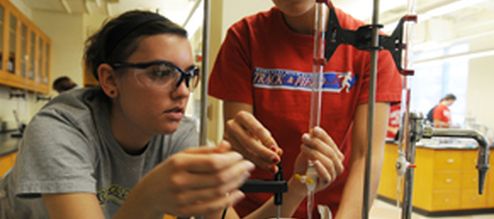S- to N-Acyl Transfer in S-Acylcysteine Isopeptides via 9-, 10-, 12-, and 13-Membered Cyclic Transition States
Document Type
Article
Publication Date
11-2012
Publication Source
Journal of Peptide Science
Abstract
S-Acyl cysteine peptides containing α-, β- or γ-amino acid residues undergo long-range S- to N-acyl transfer to give analogs of native tripeptides and tetrapeptides containing additional carbon atoms in the chain. The ease of intramolecular S → N-acyl transfer relative to intermolecular transacylation is favored increasingly for 9 < 12 < 13 ~ 10-membered cyclic transition states; the observed order is explained on conformational and intermolecular interaction considerations.
Inclusive pages
704–709
ISBN/ISSN
1075-2617
Copyright
Copyright © 2012, European Peptide Society and John Wiley & Sons
Publisher
John Wiley & Sons
Volume
18
Peer Reviewed
yes
Issue
11
eCommons Citation
Bol'shakov, Oleg; Beagle, Judit K.; Chahar, Mamta; Ha, Khanh; Khelashvili, Levan; and Katritzky, Alan R., "S- to N-Acyl Transfer in S-Acylcysteine Isopeptides via 9-, 10-, 12-, and 13-Membered Cyclic Transition States" (2012). Chemistry Faculty Publications. 71.
https://ecommons.udayton.edu/chm_fac_pub/71
COinS




Comments
Permission documentation is on file.